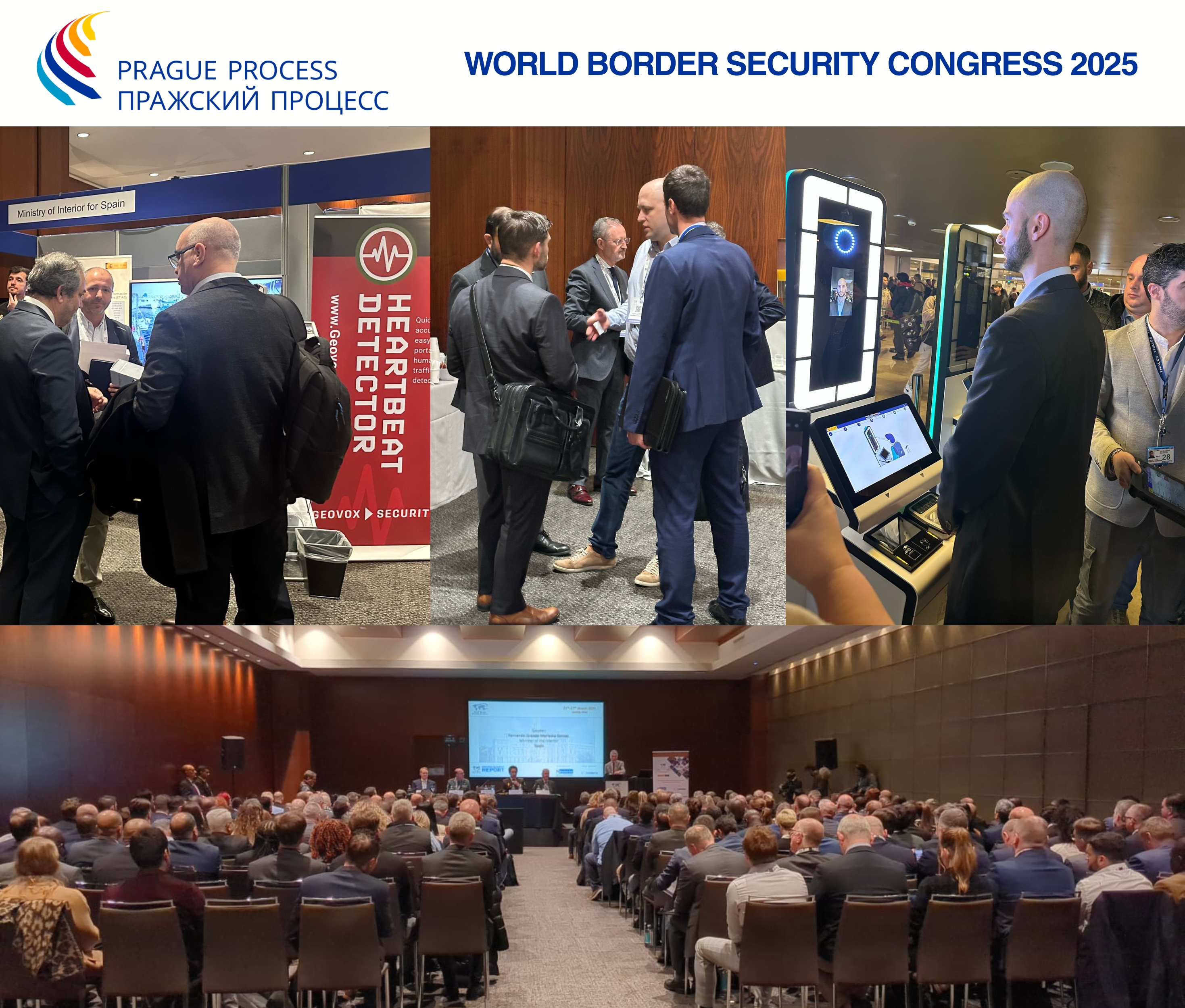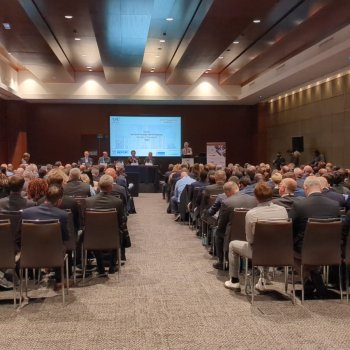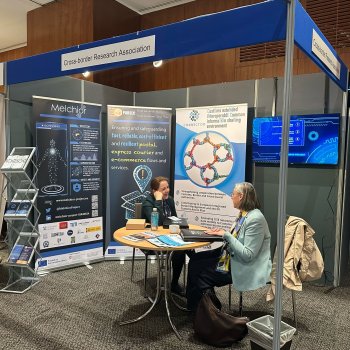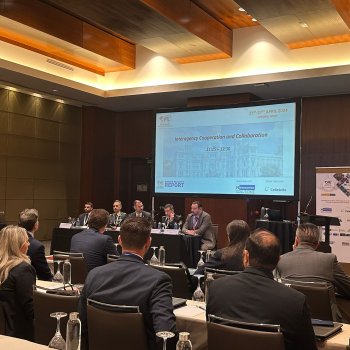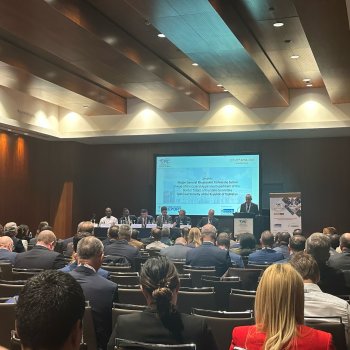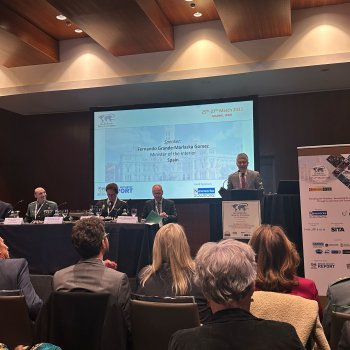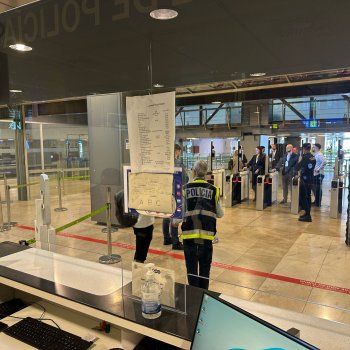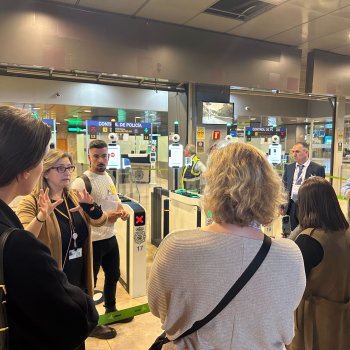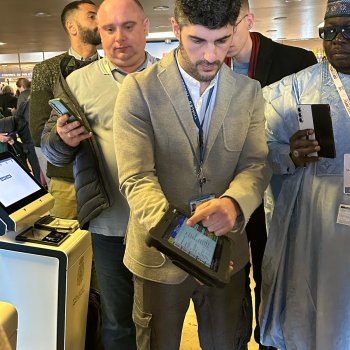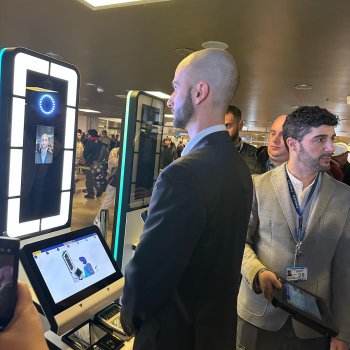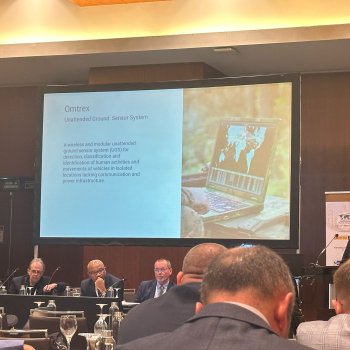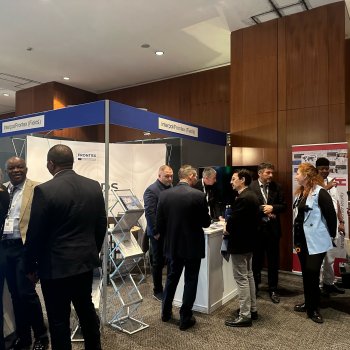“Patrolling the Periphery - Developing Border Strategies Through Co-operation and Technology”
On 25-27 March, representatives of nine Prague Process states attended the 14th edition of the World Border Security Congress, held in Madrid. The event convened over 450 experts, policymakers, and practitioners from 60 countries, including representatives of IOM, UNODC, UNOCT, OSCE, EC, FRONTEX, and INTERPOL. Marking its second return to Madrid, the event reflected on the growing complexity of global mobility.
This high-level congress provided a platform for senior border officials to meet, discuss and debate evolving landscape of border security and migration governance spotlighting innovative practices, policy responses, and shared commitments. In alignment with the priority area 1 of the Prague Process Action Plan, the Congress strongly resonated with the objectives of the Process’s Digital Lab and Resilience Hub by addressing preparedness, digitalisation, as well as use and integration of modern border technologies. The exhibition held alongside the Congress allowed participating states to exchange knowledge and explore cutting-edge technological solutions – tools and products in border management - showcased by the private sector.
Spain’s Minister of the Interior, Fernando Grande-Marlaska Gómez, opened the Congress with a strong commitment to the '3 Cs' - Coordination, Cooperation, and Commitment - as essential principle in addressing the challenges of border security and migration governance. He emphasized that irregular migration is a multifaceted issue requiring holistic responses. With over 64,000 irregular arrivals to Spain in 2024, Spain’s commitment to the “360-degree approach” to border management was clear. The Minister reinforced the importance of trust-based partnerships, aligned with EU initiatives such as the EU Entry/Exit System (EES) and ETIAS.
Hans Leijtens, Executive Director of FRONTEX, highlighted the agency’s transformation into a proactive, strategic actor in EU security. With an upcoming scale-up of officers, FRONTEX is increasingly driven by intelligence, inter-agency coordination, and the rule of law. He underscored the need for sustained political and operational commitment across Member States. Maria Jesús Herrera from IOM Spain underlined that the global migrant population has reached 304 million, or 3% of the world’s population, with Spain now the largest destination country in Europe. The Congress echoed her call for safe, regular migration pathways aligned with the Global Compact for Migration, and the necessity to protect vulnerable populations from exploitation.
Overall, the Congress tackled a wide array of pressing topics, ranging from counterterrorism efforts to advancements in technology, including artificial intelligence at the border. Irregular and mass migration featured prominently, with over 120 million people forcibly displaced as of 2024. The discussions addressed both humanitarian and security dimensions, as well as the need to dismantle smuggling networks and better support vulnerable populations. The complexity of maritime and riverine borders was also explored, emphasizing the jurisdictional and logistical challenges posed by transboundary waterways like the Danube. Sessions on Open-Source Intelligence (OSINT) showcased the use of publicly available data - enhanced by AI and social media analytics - to detect trafficking networks and disrupt the movement of criminal actors. Identity management, including biometric tools and document verification, was reaffirmed as the backbone of modern border control. Participants discussed how drug economies fuel corruption, sustain illicit networks, and empower terrorist organizations - posing systemic threats across borders. Environmental sustainability also took the spotlight, with border agencies now at the front line of efforts to combat illegal waste trade and wildlife trafficking, both among the world’s most lucrative environmental crimes.
In addition to the rich conference programme, participants had the opportunity to attend two insightful site visits showcasing Spain’s advanced border security infrastructure. The first visit took place at Madrid International Airport, the largest border crossing point in Spain, which handled over 66 million passengers in 2024, ranking 5th in Europe and 15th globally. Delegates observed first-hand the challenges posed by the growing number of asylum seekers and the airport’s adaptive response in expanding its infrastructure and staff capacity. The visit also offered a glimpse into the pilot implementation of the Entry/Exit System (EES) and the deployment of integrated kiosk technology, enabling real-time monitoring and decision-making.
The second visit led participants to the CECORVIGMAR National Maritime Surveillance and Coordination Center, which plays a pivotal role in monitoring Spain’s vast maritime domain. As part of Spain’s inter-agency approach to maritime border management, the centre coordinates efforts across law enforcement, naval, and environmental agencies, reinforcing the nation’s capacity to detect, deter, and respond to irregular maritime movements, trafficking, and environmental threats. Both visits provided valuable operational perspectives complementing the policy discussions at the Congress.
Finally, the Congress underscored the vital role of training and capacity building to equip border professionals with the skills needed for new technologies, evolving threats, and operational excellence.
To learn more, explore the Congress’s website and the latest issue of the Border Security Report (March/April 2025), published by the WBSC organizers, available here.

